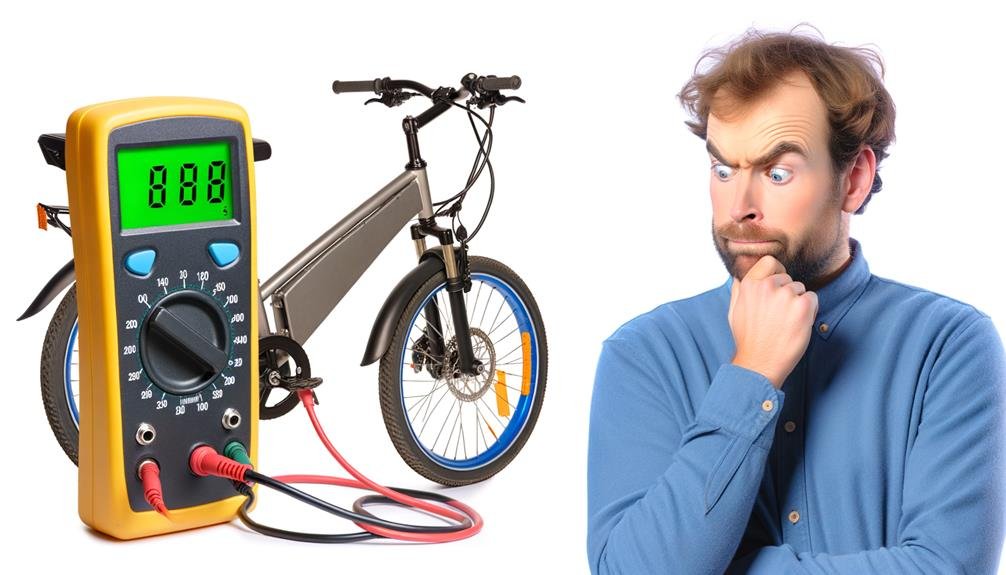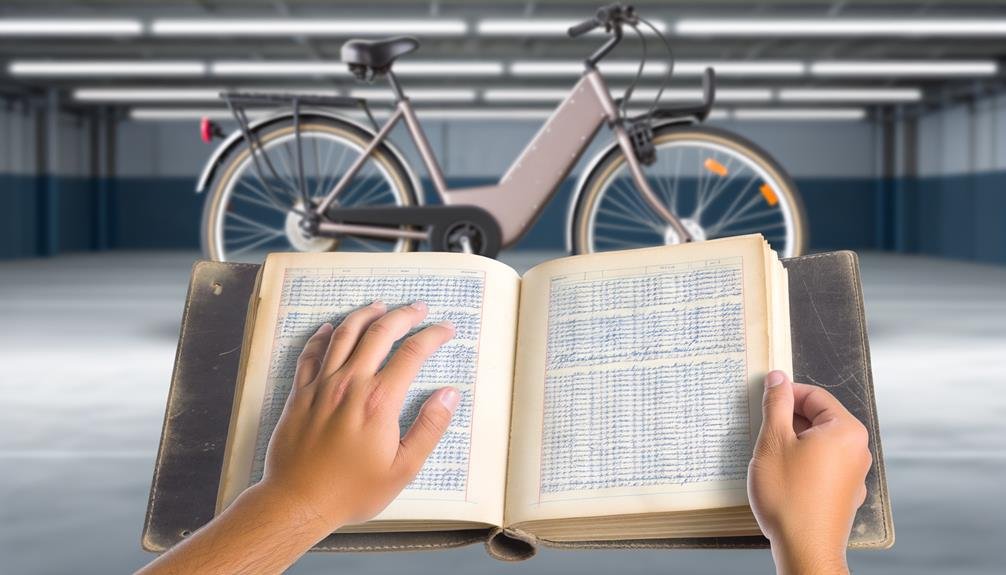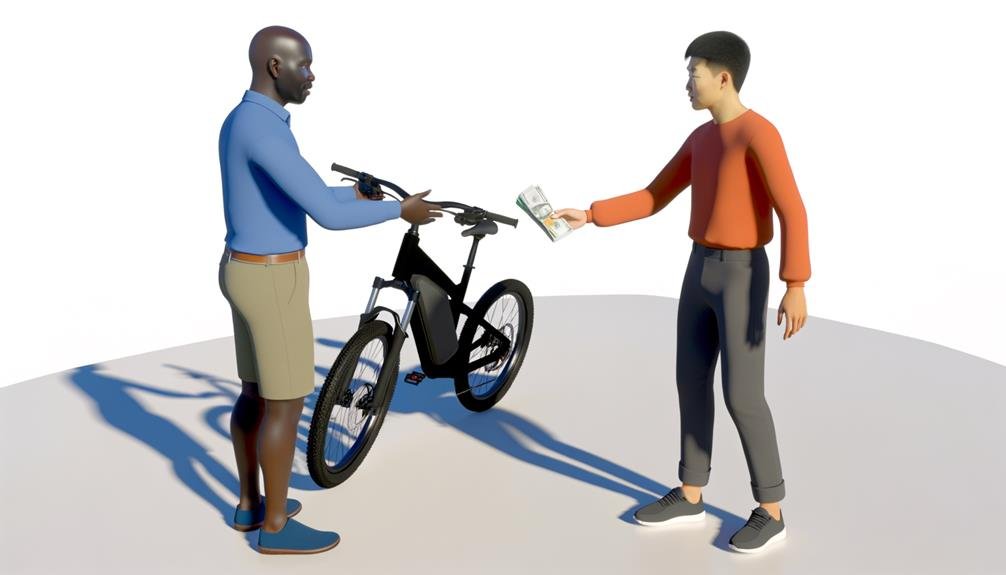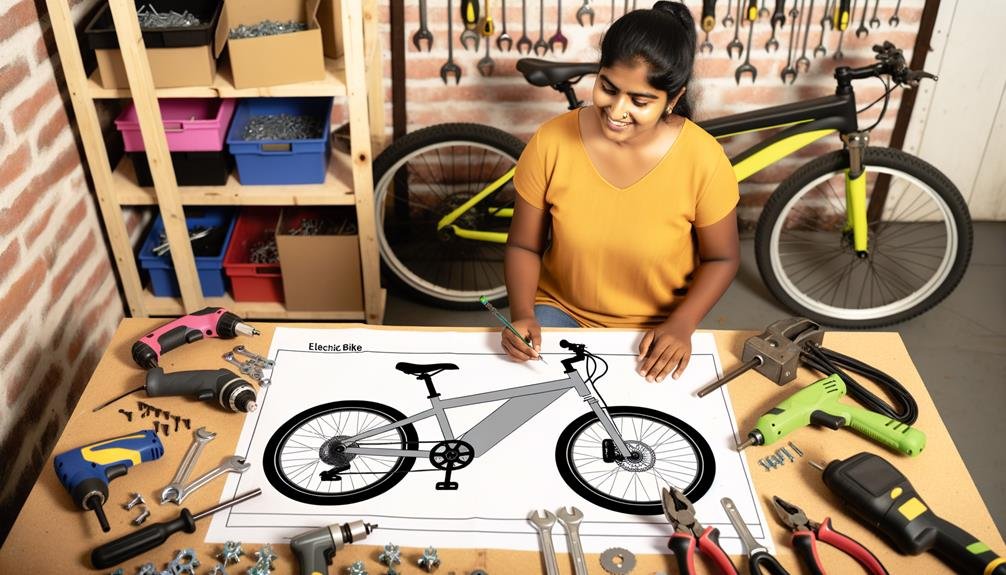Charles Miller is a veteran bike enthusiast with over 12 years of experience dealing with bikes as a mechanic. Despite immense love and expertise for...
Navigating the world of used ebikes can feel like trekking through a dense jungle without a compass. We're here to guide you because, let's face it, there's more to buying a used ebike than meets the eye.
From assessing the battery life to evaluating the bike's overall condition, one needs to be well-informed to ensure they're making a smart investment. But how can you tell if the ebike has been well-maintained? How important is the bike's mileage? And what are the red flags you should be wary of?
Stick around and we'll walk you through each of these key considerations, helping you make a decision that you won't regret.
- Key Takeaways
- Understanding E-bike Basics
- Evaluating the E-bike's Condition
- Assessing the Battery Life
- Importance of Test Drives
- Considering Bike Mileage
- Checking for Spare Parts
- Reviewing Service History
- Evaluating Price and Value
- Dealing With Private Sellers
- Spotting Potential Red Flags
- Frequently Asked Questions
- Conclusion
Key Takeaways
- E-bike warranties generally do not transfer to the second owner, so it's important to assess the e-bike's condition and potential repair costs before purchasing.
- The battery is a significant cost of the e-bike and its health should be evaluated, including its capacity, remaining charging cycles, and potential replacement costs.
- The overall condition of the e-bike, including wear and tear on the frame and components, should be inspected, and a test ride should be taken to check the brakes and handling.
- Brand reputation is important as it ensures responsive service and support for any potential issues with the used e-bike.
Understanding E-bike Basics
Before diving into the specifics of buying a used e-bike, it's crucial we understand the basics. For example, e-bike warranties generally don't transfer to the second owner. Additionally, the battery, which represents a significant portion of the e-bike's overall cost, is a major consideration. This fact alone makes it essential to ensure the e-bike battery's health before committing to a purchase.
A prospective e-bike buyer should take a test ride to evaluate the overall condition of the e-bike parts. The performance of the battery during the ride can also give us some insight into its health. It's not just about how long the battery lasts, but also how well it performs under different riding conditions.
Brand reputation is another important factor. A reputable brand ensures responsive service and support, even for a used electric bike. It's also essential to obtain proof of ownership to ensure a legitimate transaction.
Evaluating the E-bike's Condition
When it comes to evaluating the condition of a used e-bike, there's a lot we need to check, from visible damage and wear on the frame and components to the battery's capacity and remaining charging cycles. Evaluating the e-bike's condition gives us valuable insight into its performance, lifespan, and potential value for money.
- Inspect the Bike: Pay particular attention to signs of wear and tear on the frame and components. This can indicate how well the bike has been maintained and what future repairs might be needed.
- Check the Battery: Battery life is crucial in used e-bikes. You need to know the battery's remaining capacity and charging cycles and consider potential replacement costs.
- Investigate the Bike's History: Inquire about the condition of the bike, including service records, repairs, and replacements. This helps identify possible issues that may not be immediately apparent.
- Test Drive: Finally, take the e-bike for a spin. Check the brakes, see how it handles, and ensure it meets your needs and comfort.
Assessing the Battery Life

Next, we'll turn our attention to assessing the battery life of the e-bike. This is a crucial factor in determining its value and usability.
We'll explore how to understand battery degradation and the signs to look for when assessing potential battery damage.
Additionally, we'll discuss the costs associated with battery replacement.
Understanding these points will help us make an informed decision when purchasing a used e-bike.
Understanding Battery Degradation
Diving into the heart of the matter, it's crucial to get a handle on the battery's original and current capacity when buying a used e-bike. Since batteries lose capacity over time, understanding battery degradation is vital to avoid surprises.
To make an informed decision, consider these key factors:
- Original and Current Battery Capacity: Check the battery capacity at full charge and compare it with its original capacity.
- Full Charge Cycles: The number of full charge cycles the battery has undergone affects its efficiency.
- Battery Age: Older batteries might need replacement sooner.
- Cost and Availability: If the battery is worn out, consider the cost and availability of a suitable replacement for your used ebike.
Battery Replacement Costs
Having scrutinized the battery's original and current capacity, along with its age and the number of full charging cycles it's been through, we must now turn our attention to the potential costs of battery replacement and how to assess the remaining battery life.
When buying a used bike, remember that battery replacement costs can be substantial, often amounting to 20-50% of the original purchase price or more. We need to consider the lifespan of electric bikes' batteries, as their capacity depletes with each charging cycle.
Some e-bike batteries provide detailed diagnostics, while others require manual calculations. Assessing the remaining battery life is crucial in understanding the bike's value and the cost of replacement batteries. Always factor in the potential cost of a new battery.
Signs of Battery Damage
Turning our focus to signs of battery damage, let's first examine the overall condition of the battery pack, looking for any signs of wear, damage, or corrosion. When you're preparing to buy a used bike, it's critical to thoroughly inspect the battery pack.
Here's a helpful checklist:
- Check the voltage of the battery using a multimeter. This will give an accurate picture of the battery's health.
- Inquire about the number of charging cycles. The fewer, the longer you'll be able to ride the bike before needing a replacement.
- Look for diagnostic reports or onboard computer data. This information can be invaluable when buying a used electric bike.
- Consider potential battery replacement costs. It's an important factor in the overall cost of the bike.
Importance of Test Drives

We can't overstate the importance of test drives when buying a used e-bike.
It's through this hands-on experience that we gauge the bike's performance, detect any potential issues, and understand the level of ride comfort.
Simply put, a test drive is an essential step in ensuring the e-bike meets your needs and preferences.
Evaluating Ebike Performance
Before purchasing a used ebike, it's critical to take it for a test drive to fully understand its capabilities, performance, and safety features. Evaluating ebike performance isn't something you rush; it's a meticulous task that requires attention and thoroughness.
During the test ride, pay close attention to the bike's power delivery and handling. Does it feel stable, reliable, and responsive?
Test the ebike on a variety of surfaces and gradients. How it responds will give you a clear picture of its overall performance.
Take a closer look at the brakes. Their responsiveness is a key safety feature.
Detecting Potential Issues
Unveiling potential issues during a test drive is a crucial step in buying a used e-bike. It's our chance to assess acceleration, braking, and overall handling. We need to make sure there's nothing wrong with the bike, and a test drive is the ideal opportunity for detecting potential issues. We must watch for red flags such as poor responsiveness or inefficiency, particularly during longer rides.
It's important to ensure the bike performs well on different terrains and inclines too. The battery's range and the motor's power-assist levels should also be carefully evaluated to ensure optimal performance.
Always remember, buying a used e-bike should never be a leap in the dark.
Understanding Ride Comfort
Stepping onto the saddle for a test drive is essential to fully understand the ride comfort and performance of a used e-bike. As e-bike owners, we know this is a crucial step in E-Bike Shopping. Here's why:
- It allows us to assess the pedal assist. This feature enhances ride comfort, but its responsiveness varies among used bikes.
- We get to experience the bike's suspension and handling, which impact ride comfort significantly.
- A test drive reveals the bike's stability and maneuverability, features that may be compromised in used bikes.
- Lastly, it's a 'buyer beware' situation. The current owner may not disclose all issues. A test drive helps us detect any hidden problems.
Considering Bike Mileage

When looking at used e-bikes, it's crucial to consider the bike's mileage as it gives us a clear picture of its usage, potential wear and tear, and the possible need for battery replacement. High mileage indicates that the bike has been used extensively. This could mean more frequent battery charging and a potential need for a new battery soon. If you're thinking about buying a high-mileage bike, it's a good idea to check with local bike shops about battery replacement costs.
On the other hand, bikes with lower mileage may have less wear on the motor and other components, making them a potentially better buy. Ask the seller about the type of mileage the bike has been used for. Whether the bike was used for city commuting or rugged off-road trails can make a difference in its condition.
If you're shopping for a used e-bike, consider the mileage in conjunction with the bike's age to evaluate its overall condition. Remember, the decision to purchase shouldn't be rushed. Take your time, gather all the necessary information, and make an informed choice.
Checking for Spare Parts
Beyond considering the bike's mileage and age, it's also important to assess the availability and cost of spare parts for the specific e-bike model you're interested in. This step is key to avoid being left with an unusable e-bike due to lack of parts for additional repair.
- Check the Availability of Parts: Parts that are subject to frequent wear and tear, like the motor and controller, should be readily available. If they're scarce or discontinued, you might be signing up for future headaches.
- Research the Cost: The price of spare parts can significantly add to your e-bike's lifetime cost. So, it's worth researching this beforehand to avoid unpleasant surprises.
- Ask for Proof of Purchase: An original receipt or invoice can reveal if the e-bike has been serviced regularly and if any parts have been replaced.
- Inspect the Bike: Despite checking everything else, physically inspect the bike. Look for rusty spots or any other signs of neglect that might hint at future maintenance issues.
Reviewing Service History

Diving into the service history of the e-bike is a crucial step in determining its upkeep and potential future issues. It's the 'buyer beware' part of purchasing a used ebike. Just like buying a used car, the service history can provide valuable insights into the bike's past care and potential problems.
We recommend asking for maintenance and service records during your internet search. If these are available, it's a good indication that the previous owner has taken care of the bike. Regular servicing and part replacements are positive signs. They mean the bike has been well-maintained, increasing the chances that it will serve you well, even if it's not brand new.
A well-documented service history can highlight any recurring issues that might become your problem down the line. It's also useful in assessing the ebike's potential longevity and future maintenance needs.
Evaluating Price and Value
When buying a used ebike, it's crucial to evaluate both price and value. We'll need to balance the initial cost with potential repair expenses, the bike's condition, and the battery life.
Looking into the brand's reputation, any available warranties, and the bike's overall condition can also provide insights into its true value.
Assessing Financial Worth
In evaluating the financial worth of a used e-bike, it's essential to not only look at the upfront cost but also consider factors like warranty coverage, battery lifespan, and overall condition. Our Guide to Buying will help you navigate through various price points and save money while avoiding 'buyer beware' scenarios.
- Assess the warranty coverage. It usually doesn't transfer to second owners, affecting the value.
- The battery, an expensive component, can require replacement, costing 20-50% of the purchase price or more, so consider its cost and lifespan.
- Evaluate the overall condition of the bike, including the frame and components, to assess its maintenance and future costs.
- Determine the remaining battery life, crucial in assessing financial worth.
Don't forget to inquire about the original purchase receipt to ensure a legitimate transaction.
Price Versus Quality
While evaluating the price and value of a used e-bike, it's vital to weigh the quality of the product against its cost. It's a classic case of price versus quality.
Naturally, a new bike with a lot of gears and top-tier e-bike components may command a higher price. But remember, 'buyer beware' when it comes to used e-bikes. A low price may be enticing, but the quality and condition of the bike, specifically the battery and other components, could lead to higher future costs.
Dealing With Private Sellers

Navigating the world of private sellers can be tricky; we must ensure they provide proof of ownership to dodge potential scams or stolen e-bikes. Here, the old adage 'buyer beware' rings true. Dealing with private sellers requires diligence and a keen eye for detail.
- Check the proof of ownership: This will save you a lot of potential trouble. It's always a good idea to verify that the seller is the rightful owner of the used ebike.
- Inquire about the ebike's mileage: This can give you an idea of how much the bike has been used and its remaining lifespan.
- Assess the bike's condition: Check for any visible damage. This can be a telltale sign of how well the bike has been maintained, guiding you to the right one.
- Check the battery life: Detailed information about the remaining battery life can help you understand the ebike's value and potential future costs.
Spotting Potential Red Flags
Armed with the knowledge of dealing with private sellers, let's now turn our attention to spotting potential red flags when purchasing a used ebike. Remember the old saying, buyer beware? It's especially true here.
One of the first red flags to keep in mind is the absence of an original receipt or proof of purchase. This could indicate that the bike might've been stolen. It's always a good idea to check theft registries like Bike Index or Project 529.
Missing keys or a battery charger could also be a cause for concern. These are essential components, and their absence could imply neglect or misuse. Make sure to check for missing accessories or incomplete bike; these could add to your expenses later on.
If the seller refuses a mechanic inspection or won't provide diagnostic reports for Bosch e-bikes, consider it a red flag. These reports can reveal potential issues that mightn't be immediately apparent.
Lastly, remember to ask about the battery. If it's more than a few years old, you may need to replace the battery sooner than you'd like. Don't let these red flags deter you, but be prepared to negotiate or walk away if necessary.
Frequently Asked Questions
Is It Worth Buying a Second Hand Electric Bike?
We believe it's worth buying a second-hand electric bike if the price comparison, warranty availability, maintenance records, previous usage, battery health, and seller's credibility check out. However, always consider ebike legislation too.
What Is the Average Lifespan of an Ebike?
Isn't longevity crucial? We believe the average lifespan of an ebike, given ideal maintenance, depends largely on battery health and performance degradation. Typically, it's 3-5 years but can extend with replacement parts and proactive care.
What Should You Look for When Buying an Ebike?
We're checking battery condition, frame integrity, motor efficiency, brake functionality, and gear performance. We're also evaluating the suspension system and price. It's all about ensuring we're getting a reliable, safe, and cost-effective ride.
How Do I Know if My Used Bike Is Good?
We'll confirm a used bike's quality by inspecting the frame, testing battery health, brake efficiency, gear functionality, tire condition, and saddle comfort. We'll also consider the bike's brand reputation. A good bike checks all these boxes.
Conclusion
In wrapping up, remember, buying a used e-bike isn't a walk in the park. It's a journey, requiring knowledge, patience, and keen attention to detail.
We've navigated through e-bike basics, battery life, test drives, mileage, service history, and spotting red flags.
So, with this map in hand, you're equipped to unearth the perfect e-bike that suits your needs and budget.
It's time to pedal into your next adventure with confidence and ease. Happy e-biking!

Charles Miller is a veteran bike enthusiast with over 12 years of experience dealing with bikes as a mechanic. Despite immense love and expertise for his Tacoma, he rides his Trek Ebike more. Anytime you meet him, you’ll either hear him talking about Bikes, or writing about all things bikes and cars on this blog.
More Posts


